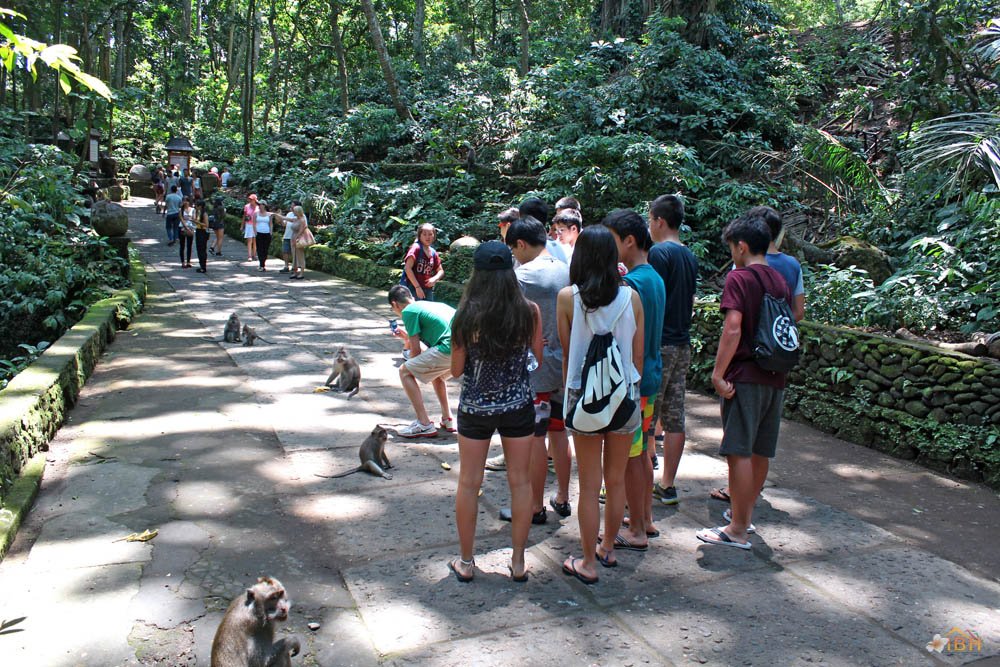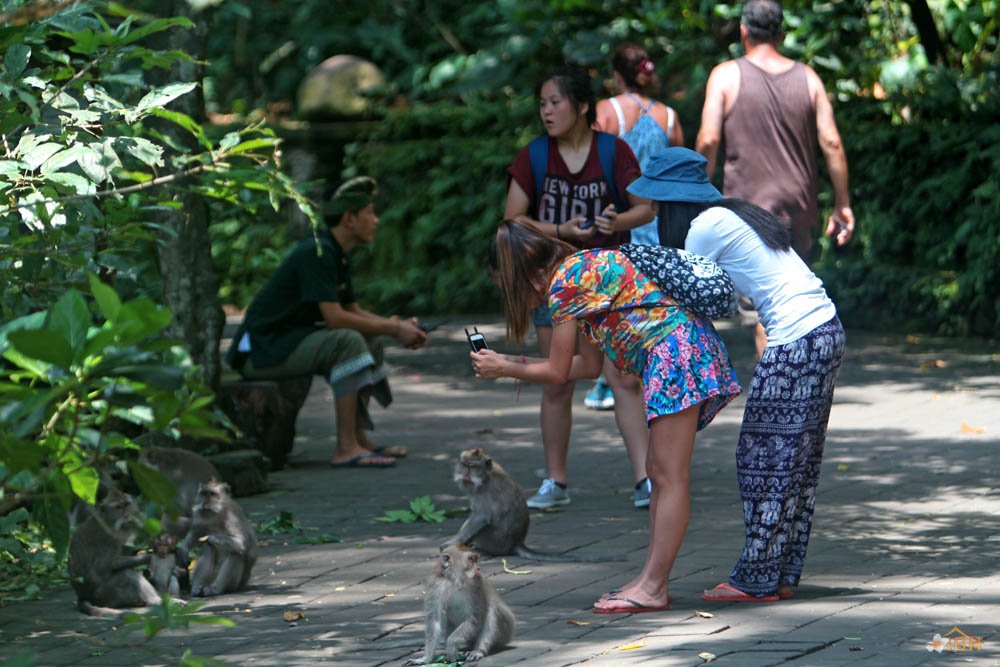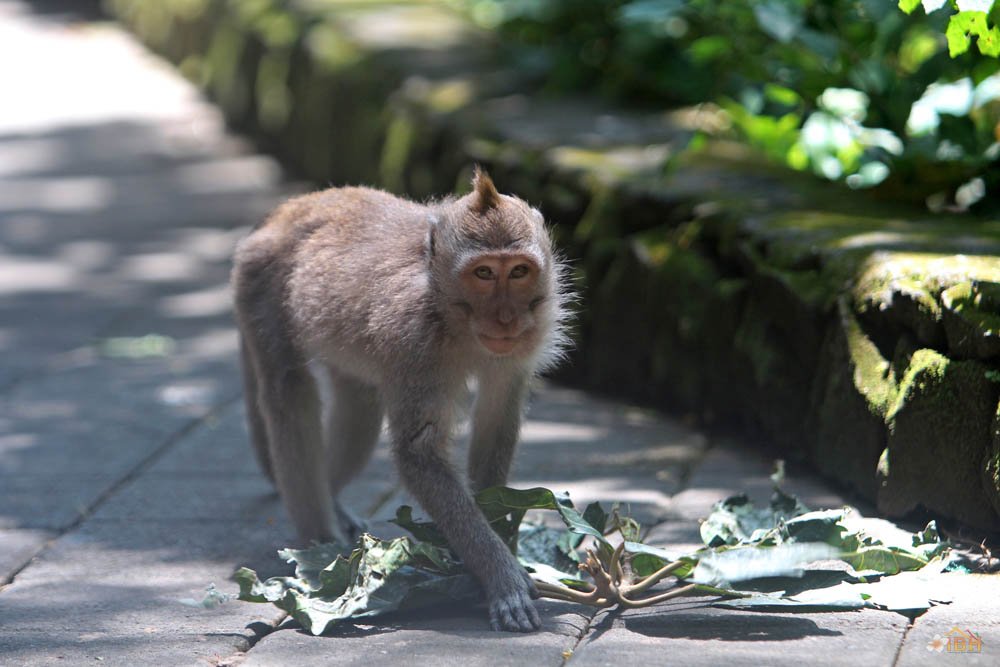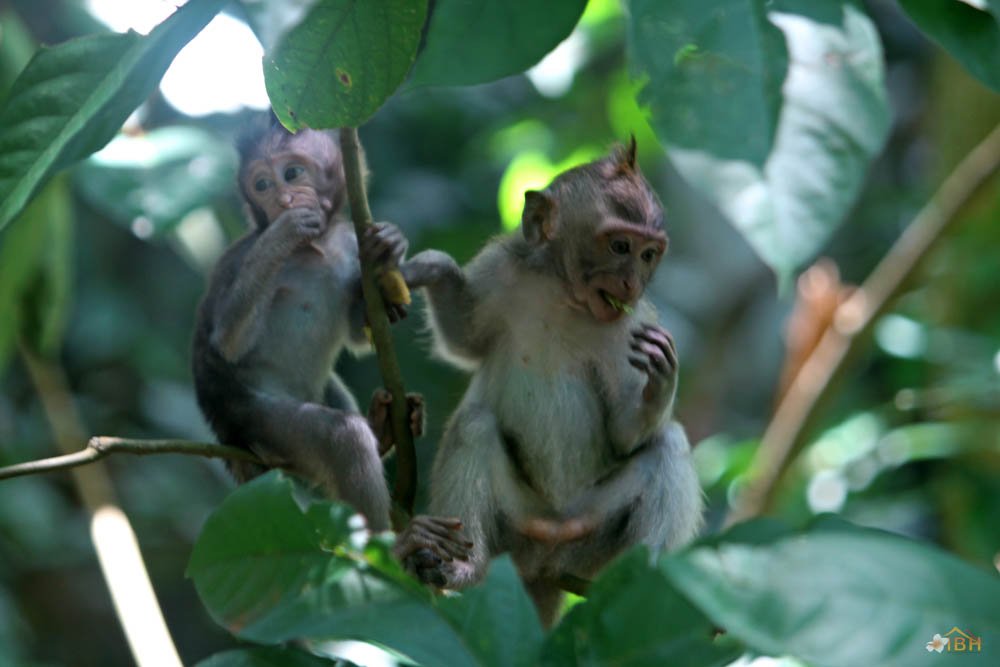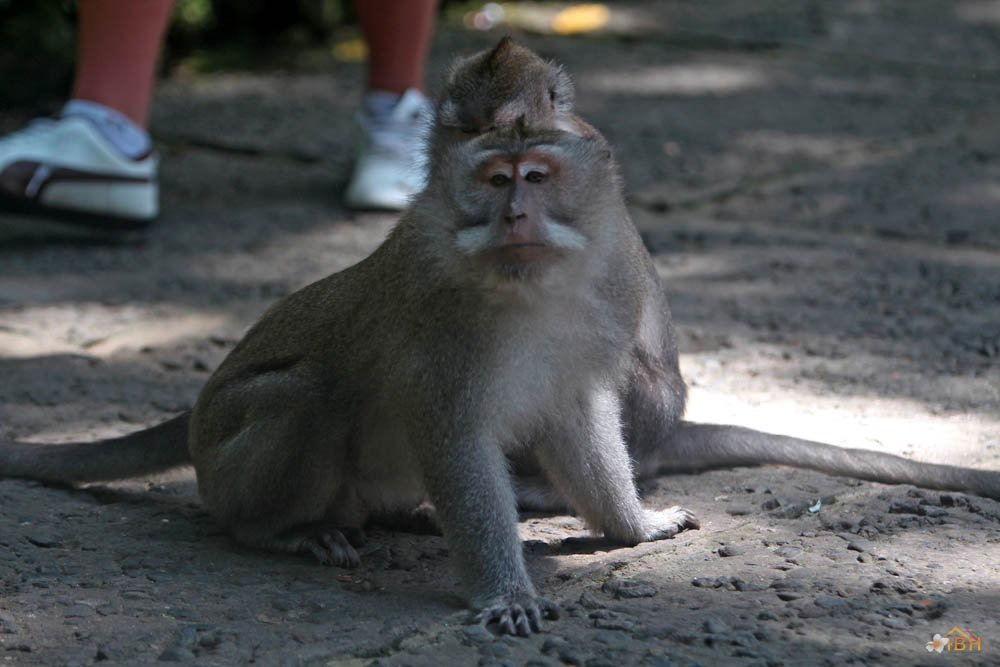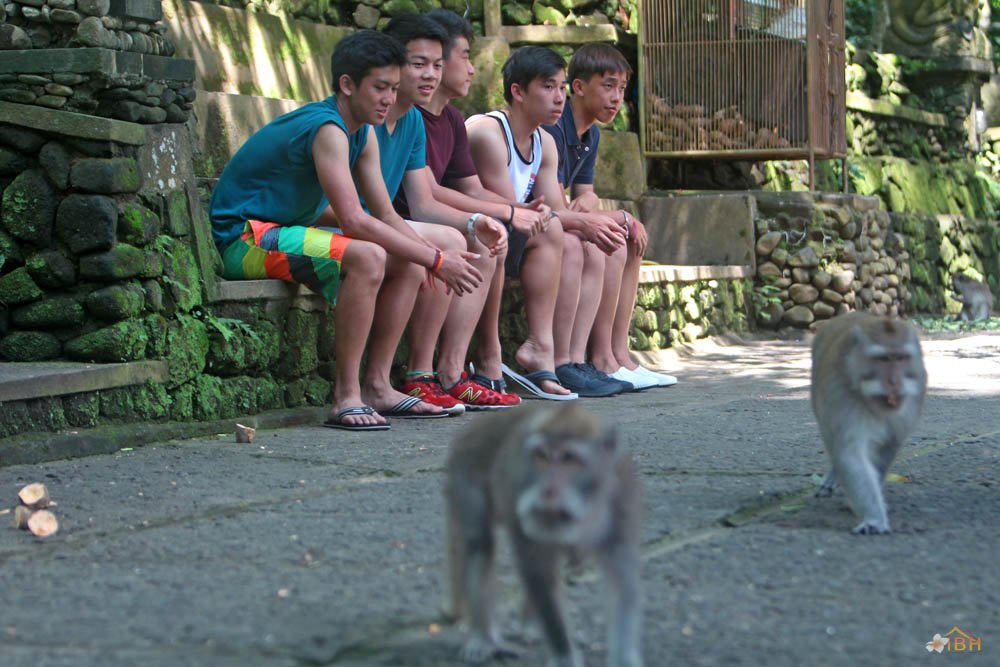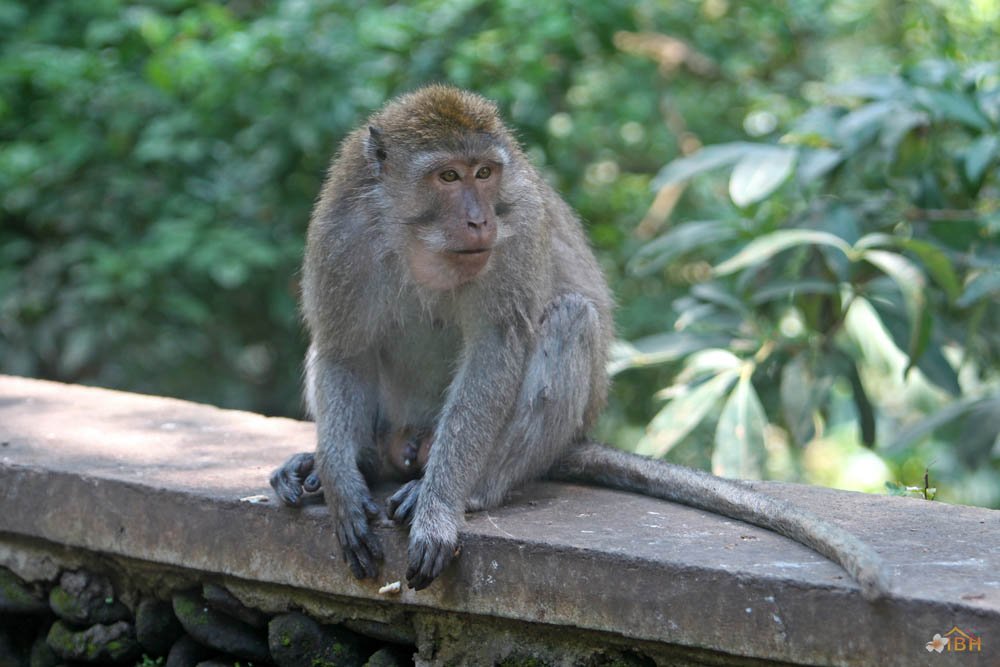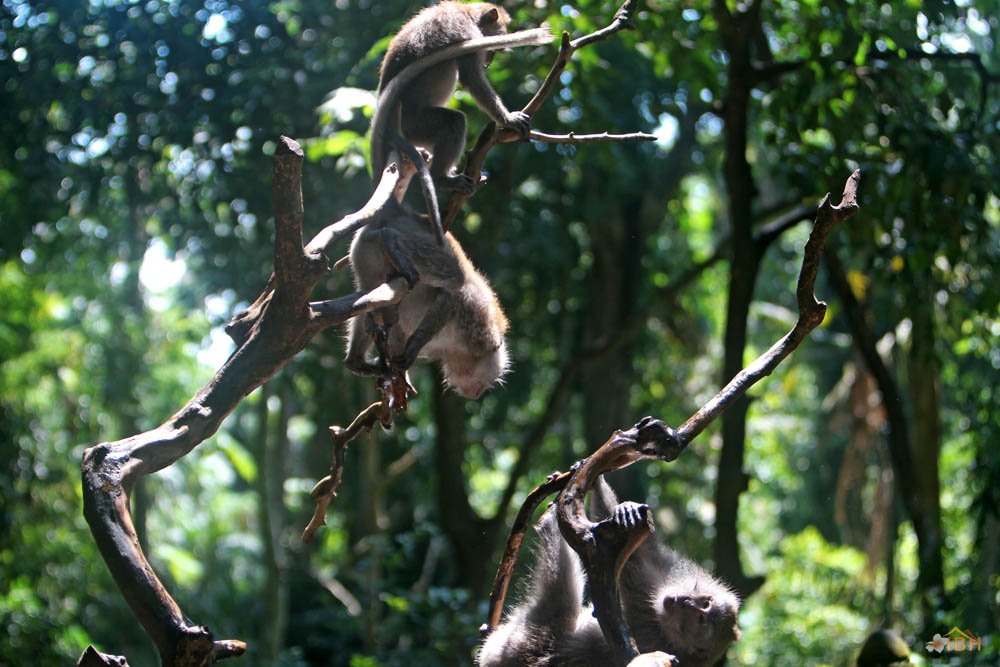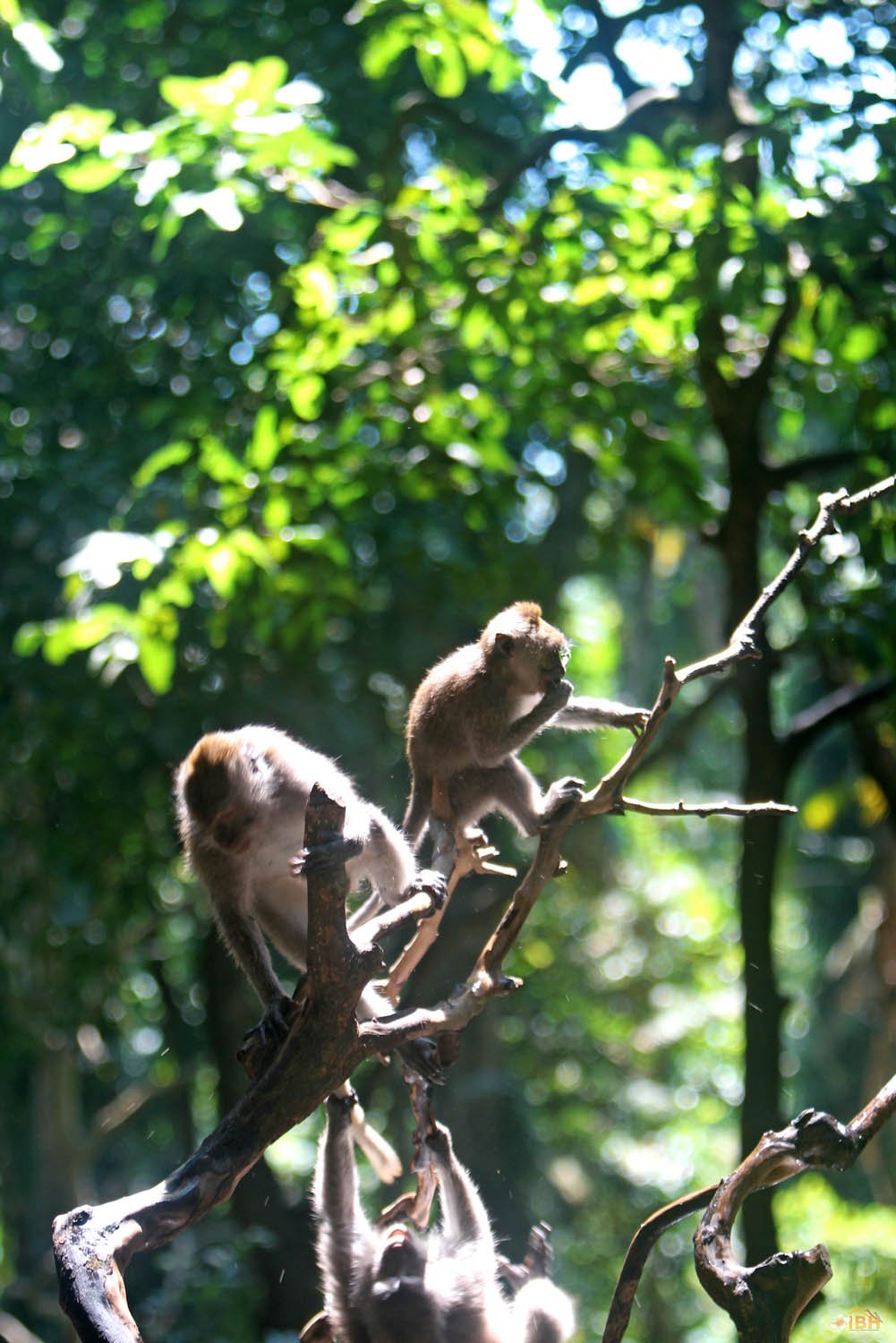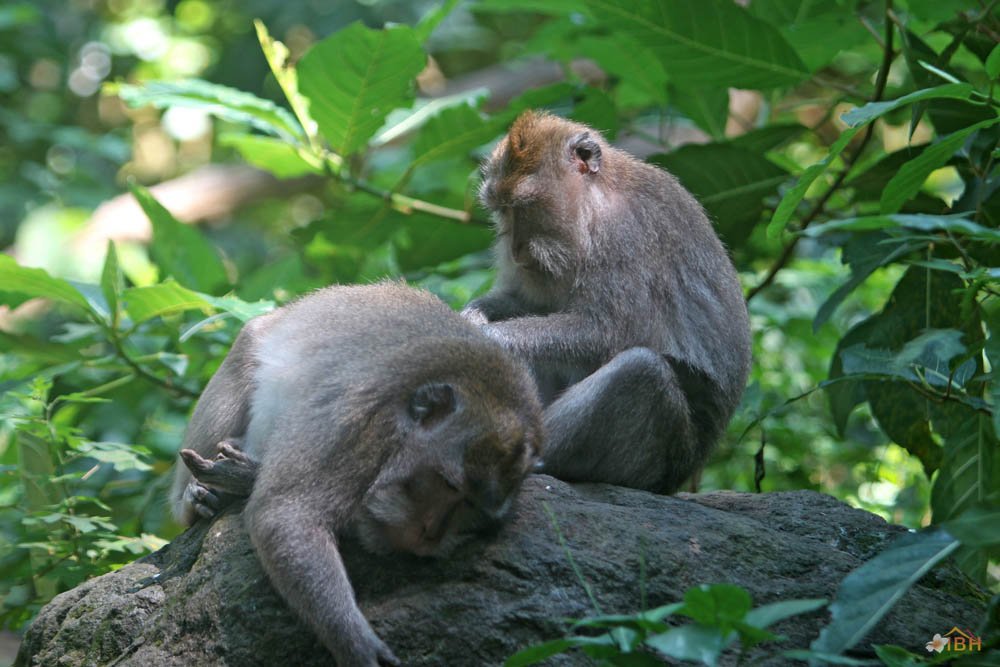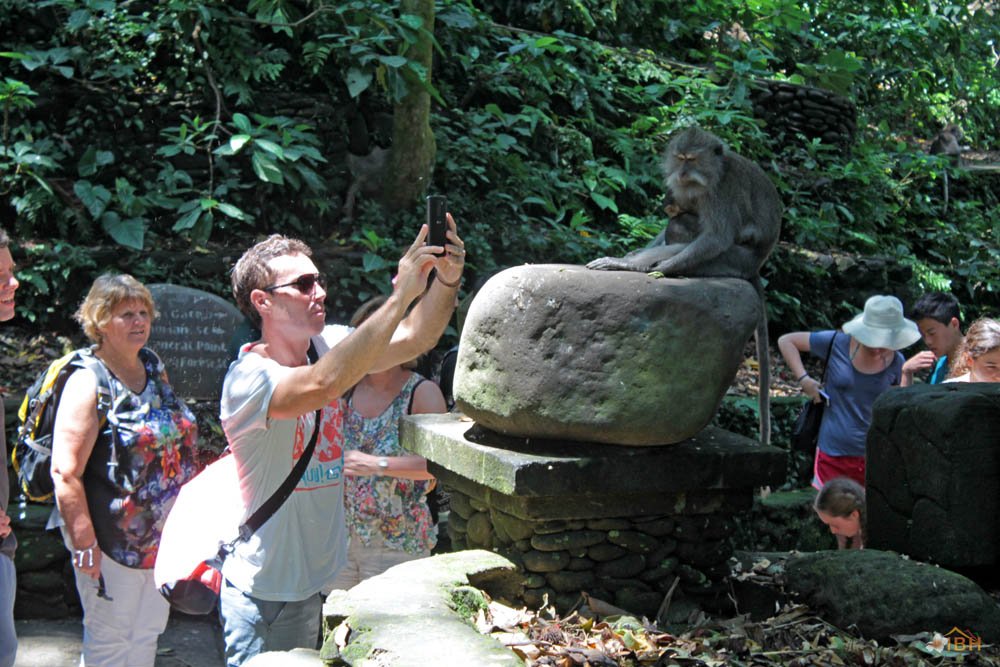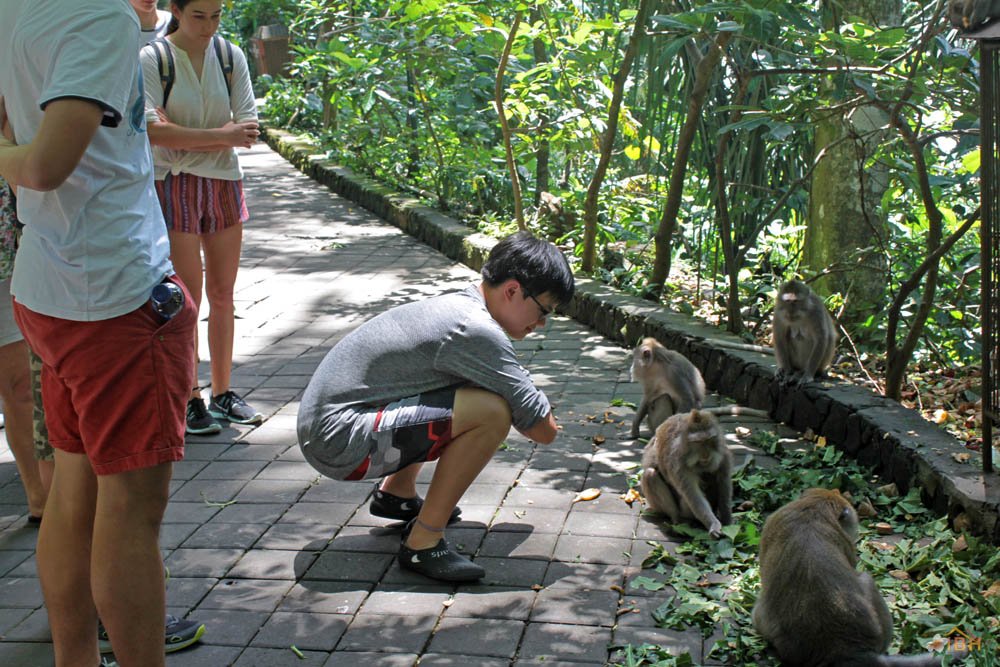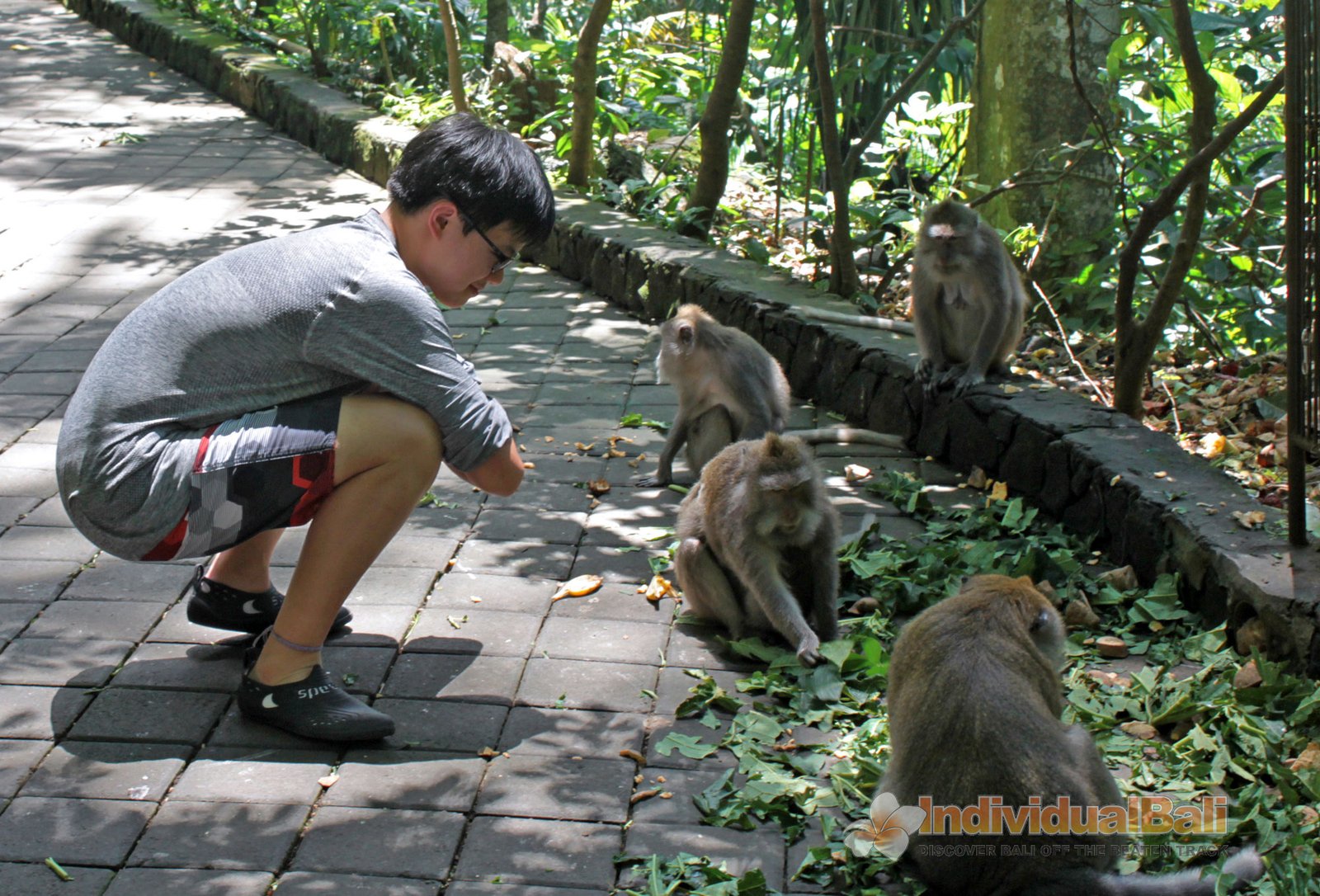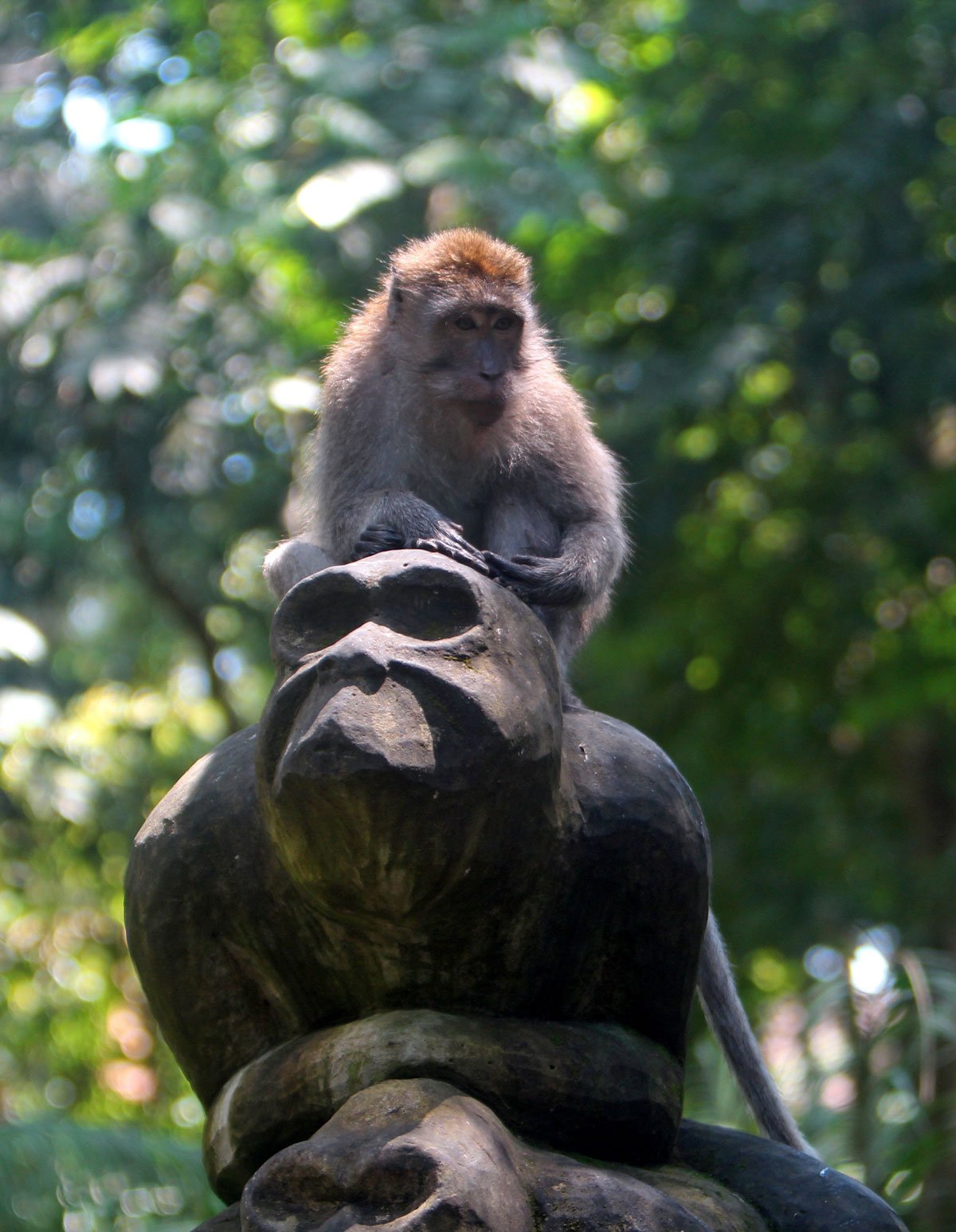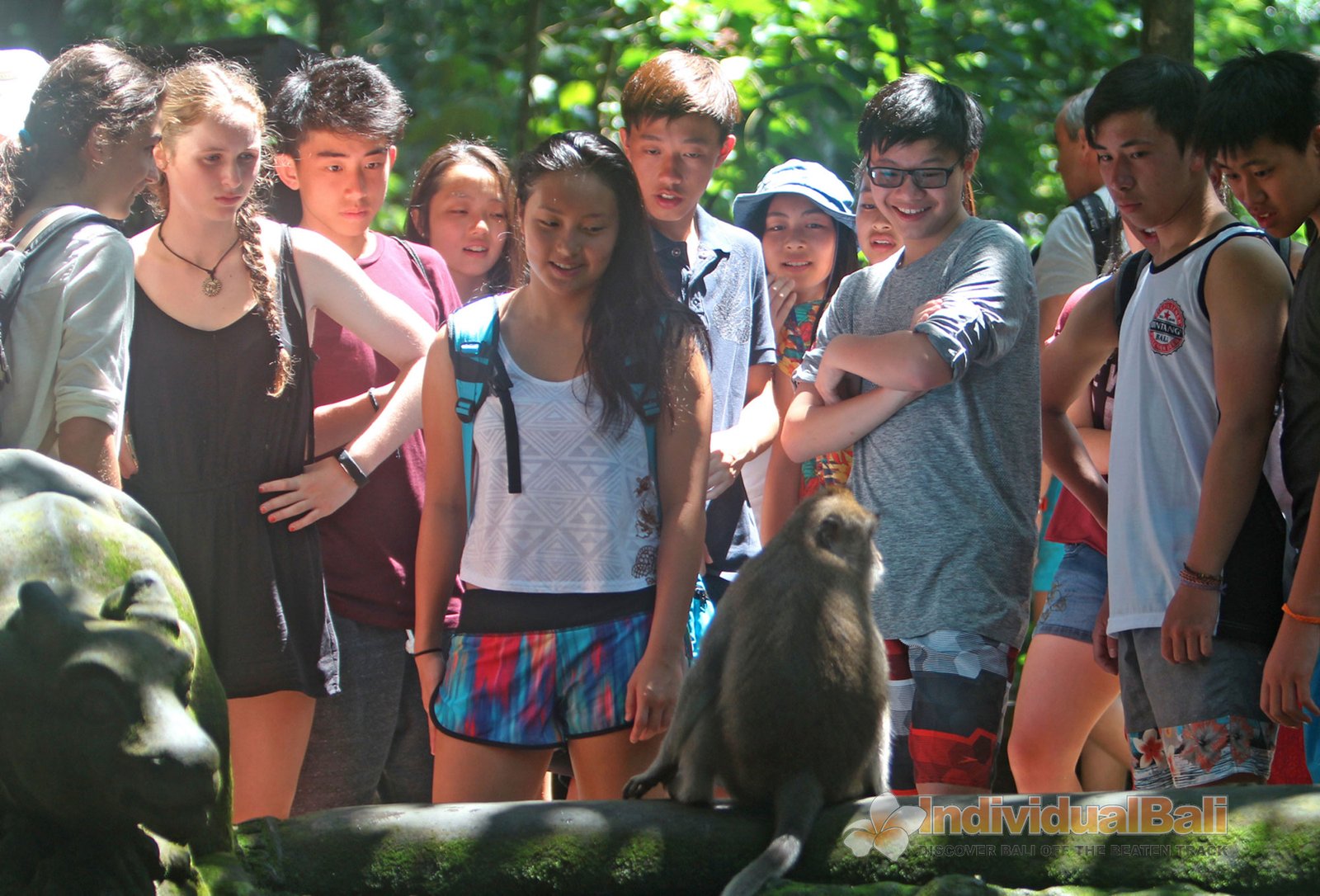The monkeys within the Sacred Monkey Forest of Padangtegal are commonly called long-tailed macaques. Their scientific name is Macaca fascicuiaris. Macaques are found throughout Southeast Asia and many species of macaques live successfully in areas that are heavily utilized by humans. On Bali, there are Balinese long-tailed macaque troops (populations) that live in areas where they have little to no contact with humans and troops that come into contact with humans on a regular basis. However, despite the fact that many species of macaques thrive in areas that are heavily utilized by humans, there is evidence that the viability of Balinese long-tailed macaques (the ability of macaques to continue to thrive) may be dependent upon the conservation of Bali’s forested areas.
Within long-tailed macaque societies, females are typically born into and remain with a single troop for life. In contrast, adult and sub-adult males may migrate between troops (young adult males typically leave their natal troop between the ages of 4 to 8 years). In order for a migrating adult or sub-adult male to be accepted into a new troop, migrating males must align themselves with a troops’ females and be accepted by those females. Therefore, long-tailed macaque societies or troops are made up of ‘matrilines’ (‘matri’ is a root word that means ‘mother’).
Currently, there are approximately 340 (32 adult males, 19 male sub adult, 77 adult females, 122 juvenile and 54 infants) Balinese long-tailed macaques that inhabit the Sacred Monkey Forest of Padangtegal. However, these long-tailed macaques do not belong to the same troop. In fact, within the Sacred Monkey Forest, there are 4 distinct troops. Tourists tend to have a difficult time identifying the Sacred Monkey Forest’s long-tailed macaque troops. One reason for this is that the area(s) that each of the troops primarily occupy within the boundaries of the Sacred Monkey Forest changes over time. Changes in the range of each troop is dependent in part upon variations that occur in the number of individuals within each troop and changes that occur in each of the troops’ composition (the age and sex of individuals within a troop).
Finally, tourists have a difficult time identifying each of the Sacred Monkey Forest’s long-tailed macaque troops because there can be extensive overlap between the ranges of all the Sacred Monkey Forest’s troops. This overlap in ranges occasionally causes inter-troop conflicts to break out (conflicts break out between 2 or all 3 of the Sacred Monkey Forest’s macaque troops). As a result of these conflicts, it is not uncommon for troops to engage in violent physical clashes. Although it is rare for individual macaques to sustain life-threatening wounds as a result of taking part in an inter-troop clash, it is not uncommon for macaques to sustain wounds that leave permanent scars.
Throughout Bali, Balinese long-tailed macaques tend to stay within forested areas. However, Balinese long-tailed macaques, including those within the Sacred Monkey Forest of Padang tegal, occasionally wander into rice fields or even village areas that are adjacent to the forest. Outside of forested areas, monkeys can become pests and the Balinese tend to apply whatever means necessary to protect their crops and other property. The Sacred Monkey Forest’s long-tailed macaques are the subject of an ongoing research project that is being conducted by the Balinese Macaque Project. The Balinese Macaque Project involves researchers from the United States, Guam, and the University of Udayana (Bali, Indonesia). To date, the Balinese Macaque Project has conducted research to determine the mating strategies, migration and range patterns, dominance relationships, and habitat use of Balinese long-tailed macaques. The Balinese Macaque Project hopes that such research will facilitate the development of conservation strategies for Balinese long-tailed macaques and sites like the Sacred Monkey Forest of Padang tegal.
Culture Significance
Within Balinese Hinduism, monkeys can be the embodiment of both positive and negative forces. The dual nature of monkeys is especially reflected in the Ramayana (a very popular Indian epic poem). Within the Ramayana, Sita (the beloved bride of Rama) is abducted by Rawana (an evil king). Rama (an incarnation of Dewa Wisnu) calls upon Sugriwa (king of the monkeys) and Hanuman (Sugriwa’s General) to help him retrieve Sita. However, within the Ramayana, there are also antagonist monkeys like Subali that attempt to assist Rawana. In the end, Hanuman, along with his monkey army, defeats Rawana’s evil forces and helps Rama to retrieve Sita.
Because monkeys can embody both positive and negative forces, the Balinese both loathe and revere monkeys. Monkeys that occupy sacred Balinese Hindu temple sites (like the Sacred Monkey Forest) tend to be revered and protected by the Balinese. One reason for this is that monkeys, in the form of a Barong, are believed to be capable of guarding temple sites against evil spirits (for additional discussion on Barongs, see the chapter titled “GODS, GODDESSES, AND DEMONS”). However, the Balinese belief that monkeys can be negative in nature is reinforced when, for example, they raid rice fields or snatch items from souvenir shops.
Macaques Families
Adult male and female Balinese long-tailed macaques have distinguishable physical characteristics. Males tend to be larger than females. Male Balinese long-tailed macaqes can weigh up to 10 kilograms (approximately 18 pounds). Males, in comparison to females, have broader shoulders and larger canine teeth. In addition, females have facial hair that resembles a ‘bear’ whereas males have more pronounced ‘mustaches’.
Compared with adult males, sub-adult males have smaller bodies, smaller canine teeth, shorter back/shoulder hair and narrower shoulders. Compared with adult females, sub-adult females typically have shorter nipples.
This is because female macaques do not reach adult status until after they have given birth. Young macaques are split into 3 age groups. Young macaques that are between the age of 0-6 months old and have predominantly black hair color are called ‘Infant 1’. Young macaques that are between the age of 6-12 months old and have black hair only on their head are called ‘Infant 2’. Finally, young macaques that are between 1-3.5 years in age are called ‘Juveniles’. Mother macaques can be very protective and tourists should always be cautious when approaching infant macaques.


